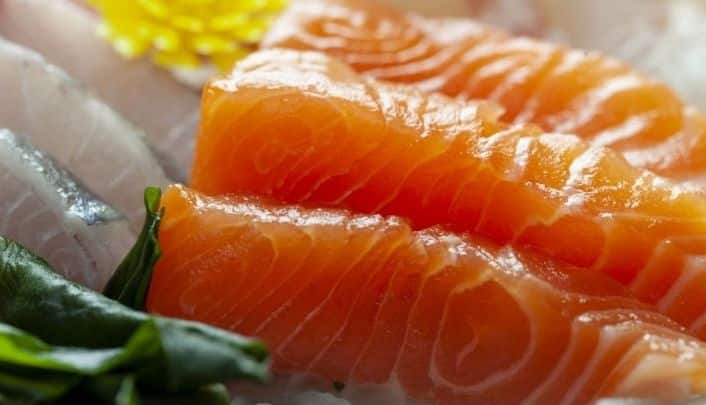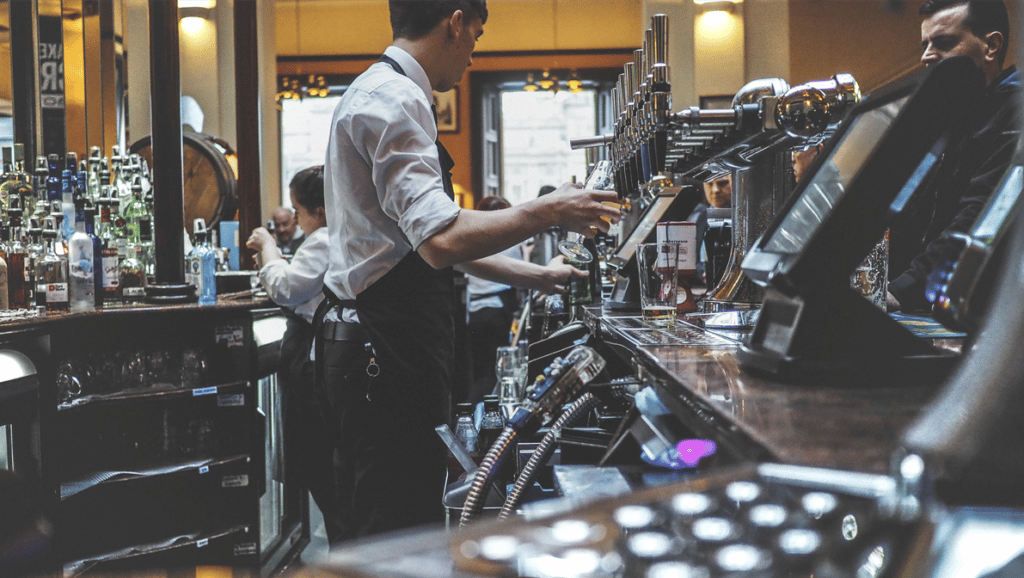[vc_row][vc_column][vc_column_text]Your restaurant is constantly generating data, whether from your sales revenue, food costs, or labor hours. The data is always there—but it’s up to you as an owner or operator to use it.
Leveraging your front of house (FOH) and back of house (BOH) data allows you to gain more insight into your operations. You may have a hunch that you are doing fewer table turns on the weekend, or that your inventory has gotten wasteful recently. But without data, you are left guessing in the dark.
Get the data you need to grow your profitability by reviewing critical FOH and BOH restaurant KPIs. Accurately tracking this data allows you to understand what areas of your restaurant operations need improvements, as well as where you can add more profit back to your bottom line.
If you can unify your FOH and BOH data, you can contribute to a healthier restaurant profitability in the long-term. In this blog, Part 2 of 2, we explore critical restaurant KPIs about your BOH data to review for long-term profitability. (Want to know more about FOH data? Read Part 1 here).[/vc_column_text][/vc_column][/vc_row][vc_row][vc_column][vc_single_image image=”36193″ img_size=”large” alignment=”center” onclick=”custom_link” img_link_target=”_blank” link=”https://www.restaurant365.com/request-demo/?Recent_Campaign=blog”][/vc_column][/vc_row][vc_row][vc_column][vc_column_text]
Restaurant KPIs impacting a profitable back of house
Your back of house is full of different data sets, so it should be data driven. Primarily, your BOH expenses cover your prime cost: your labor cost, and your food cost, otherwise known as Cost of Goods Sold (CoGS). These two costs are not only within your control (as opposed to fixed costs like rent), but they also make up the bulk of your expenses (roughly 55-70%).
What are the crucial areas of BOH data?
Track your cost of goods sold
Your Cost of Goods Sold tracks how much it costs to make each menu item. To calculate your CoGS totaled during a given period, you can use the following formula:
CoGS = Beginning Inventory + Additional Purchases Made During the Period – Ending Inventory
Understanding your CoGS means that you need to keep accurate periodic inventory. But with better inventory control, you can make data-driven product orders based on what you need given what’s already on the shelves.
You can also use your CoGS data to analyze your actual vs theoretical (AvT) food costs. Essentially, your AvT food cost shows what you should have spent on food costs versus what you actually spent. The variance between the two represents lost profit because of wasted inventory or mistakes, and it gives you a starting point for addressing the root causes of food cost inefficiencies.[/vc_column_text][/vc_column][/vc_row][vc_row][vc_column][vc_single_image image=”36962″ img_size=”large” alignment=”center”][/vc_column][/vc_row][vc_row][vc_column][vc_column_text]
How Much Should COGS Be for a Restaurant?
The Cost of Goods Sold (COGS) represents the direct expenses incurred in producing menu items. For most restaurants, COGS should range from 25% to 35% of total revenue.
Keeping COGS within this range requires meticulous inventory management, supplier negotiations, and waste reduction strategies. Implementing a robust inventory tracking system can help identify discrepancies and prevent over-ordering or spoilage. Additionally, partnering with reliable suppliers to secure bulk discounts or favorable pricing agreements can further streamline costs.
Prevent overstocking and understocking
Your overstocking and understocking rates depend on your inventory turn rate (ITR). Optimizing your inventory turnover rate allows you to avoid waste and maintain quality standards.
You can track your ITR by calculating how many times your restaurant sold its total average inventory during a period of time through your restaurant inventory management system.
To understand the context, compare your data to other similar concepts or the industry as a whole. In general, it is standard in the industry to turn your inventory in under a week. Healthy inventory turnover tends to be between 4-8 times a month.
If you have a low turnover rate, you may be over-purchasing or overstocking. This can lead to food waste or poor food quality. In contrast, a high turnover rate is generally positive. However, if it’s too high, you may fall below optimal levels for your sales, requiring you to “86” menu items too frequently.
Promote your most profitable menu items
Menu item analysis is key to understanding which items should be promoted. Making strategic decisions relies on menu engineering tools, which rank menu items by popularity and profitability.
The most profitable, and popular, menu items are your “stars.” You can track, evaluate, and make data-driven adjustments to inform your recommendations and specials to rely on star items and optimize your profit margin.
Your menu engineering can also help you evaluate whether you are pricing items appropriately for the best margin to grow your restaurant profits. Another bonus? You can even improve guest satisfaction by focusing on items that are customer favorites.[/vc_column_text][/vc_column][/vc_row][vc_row][vc_column][vc_single_image image=”36959″ img_size=”large” alignment=”center”][/vc_column][/vc_row][vc_row][vc_column][vc_column_text]
Control labor cost
Your labor cost is just as large of a factor in your BOH expenses as your food sales. In general, labor costs cover 25-35% of your sales.
Because labor is such a large expense, consider tracking the productivity of your labor as a percentage of sales to understand where you can improve. Metrics like your customers served per labor hour, or your sales per labor hour (SPLH), can help you get granular with your analysis.
To control your labor costs, start with the following:
- Leverage accurate sales forecasts
- Set labor goals for region, stores, departments based on historical data
- Break down daily labor cost vs. hourly labor forecasting
- Focus on staff training and manager empowerment
- Minimize employee turnover (discussed below)
For instance, forecast data based on historical sales data from your point of sale (POS) system can help you write more efficient schedules. And with this data in hand, your managers can make more informed decisions about adjusting employee scheduling in the moment or cross-training employees to reach a more streamlined labor cost.[/vc_column_text][/vc_column][/vc_row][vc_row][vc_column][vc_single_image image=”36963″ img_size=”large” alignment=”center”][/vc_column][/vc_row][vc_row][vc_column][vc_column_text]
Focus on employee retention
Finally, examine your data around your employee retention. Your restaurant has a unique culture, and your turnover rate can help you understand how your workplace is affecting your staff.
A high employee turnover rate could indicate issues such as:
- Culture that isn’t supportive for your staff
- Employees who are unhappy with some work conditions
- Chronically short-staffed shifts
- Feelings of burnout because of job responsibilities
Addressing a high turnover rate is essential because high turnover is expensive for your restaurant. The cost of replacing an employee covers everything like recruiting, hiring, onboarding, training, and a development period. High levels of turnover can also affect your current staff, who may feel stretched thin to cover gaps in the team.
If you want to improve employee retention, here are some places to start:
- Examine store culture
- Ensure leadership embodies the vision to rally team behind leaders toward common goals
- Shift contests, period contests
- Encourage and foster open communication
- Foster a healthy connection between FOH and BOH relationships
- Empower staff (delegate to elevate)
- Regular appraisals of employee scheduling, benefits, workplace culture
[/vc_column_text][/vc_column][/vc_row][vc_row][vc_column][vc_single_image image=”36966″ img_size=”large” alignment=”center” onclick=”custom_link” img_link_target=”_blank” link=”https://www.restaurant365.com/videos/r365-inventory-product-overview/?Recent_Campaign=blog”][/vc_column][/vc_row][vc_row][vc_column][vc_column_text]
Conclusion
While it may seem intimidating to grapple with all of your restaurant data, starting in a few key areas allows you to address the most critical restaurant KPIs first. And once you can unify your FOH and BOH data, you have a holistic view of your restaurant accounting and operations. The more you know, the more your restaurant profitability can grow!
If you would like to easily track data and gain insight into your operations to increase efficiency and boost profits, consider a comprehensive, restaurant-specific management solution. Restaurant365 incorporates restaurant accounting software and restaurant operations software into an all-in-one, cloud-based platform. It includes tools for financial reporting, operational reporting, inventory control, scheduling, and more. For more information, schedule a free demo.
SevenRooms is a data-driven guest experience platform that empowers operators to build more profitable direct relationships, deliver exceptional experiences, and increase repeat visits and orders.[/vc_column_text][/vc_column][/vc_row]



